The Big Trip – Communications – Choosing UHF Radios
If you’re in the market for a UHF radio for your car or a handheld unit, you might think they are all much of a muchness. While that may be true to a certain extent, it’s the various features of…


If you’re in the market for a UHF radio for your car or a handheld unit, you might think they are all much of a muchness. While that may be true to a certain extent, it’s the various features of…


When it comes to communications, the humble UHF radio is one of the most useful tools you can have. They are a vast improvement over the old AM CB radios many of us grew up with, offering a much better range and audio quality. When you’re travelling between destinations, having a UHF radio in the car allows you to talk to other road users or other vehicles in your convoy, get verbal directions when parking your rig or you can use it to call for help in the event of an emergency. The popularity of UHF radios means there is a vast array of brands and models available on the market. Trying to decide which is best for you can be a tricky decision. Our guide to purchasing a UHF radio can help take some of the guesswork out of the process.
Having a UHF radio tuned into Channel 40 means you can be alerted to all manner of situations that may affect you. Truckies use channel 40 to alert each other of adverse road conditions, road works and other obstructions like motor vehicle accidents. You can also monitor channel 18 as this is promoted as an alternative to channel 40. Many caravanners use channel 18 as a means of communication between each other without having to put up with all the swearing and carrying on that occasionally plagues channel 40. We have found in practice, once you get outside the major cities, the undesirable chatter diminishes making monitoring channel 40 not so offensive. We tend to get 90% of the information were need from other road users on channel 40.
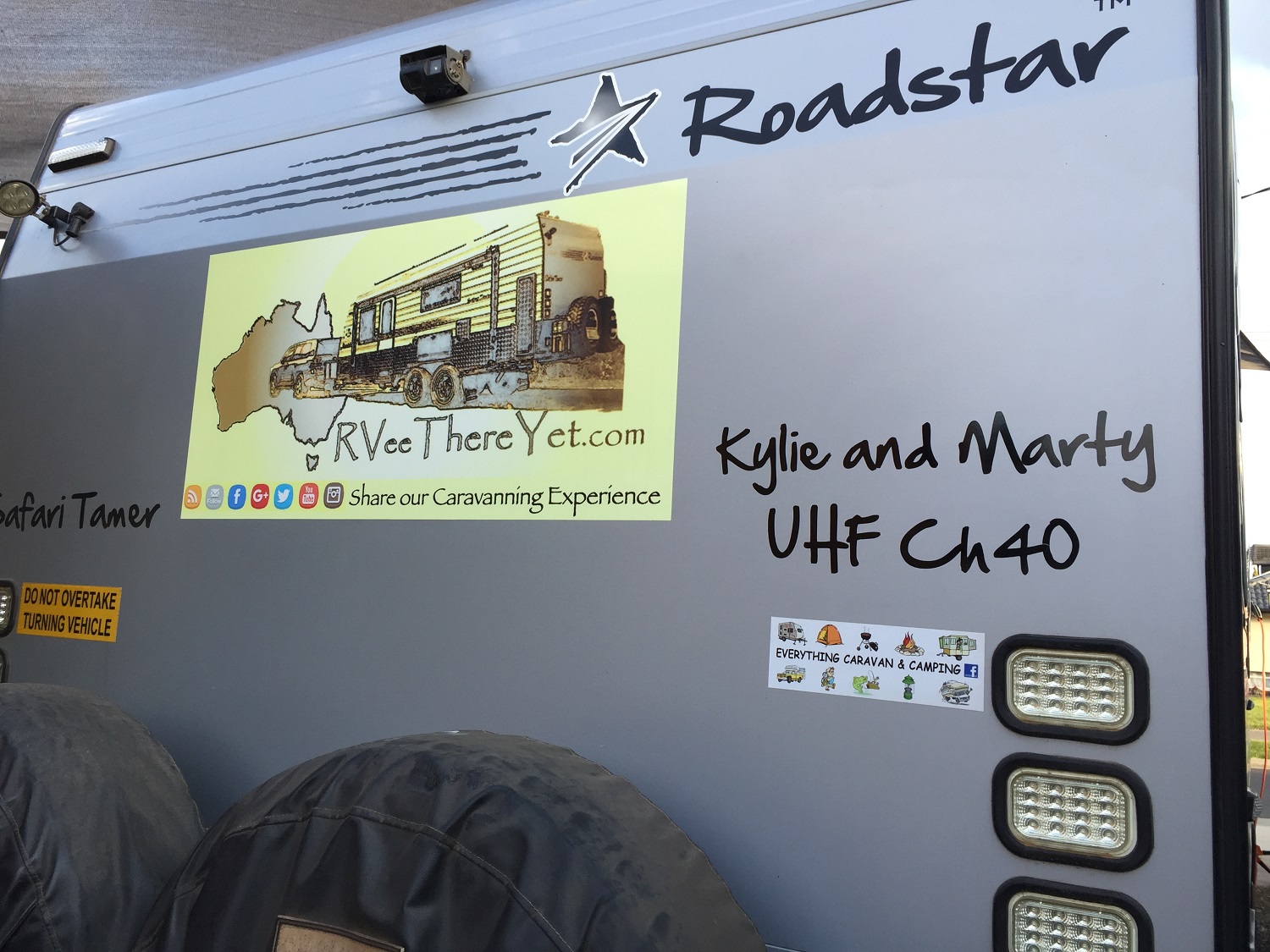
Having a UFH radio monitoring channel 40 has another advantage, one we have had personal experience with on several occasions. Anyone travelling behind you can alert you to any issues with your rig that you may be unaware of. As an example, one of our weight distribution hitch bars became dislodged while we were driving between Materanka and Katherine on the Stuart highway. We were blissfully unaware of the problem until a truckie driving behind us noticed the shower of sparks we were trailing. We were able to stop and rectify the situation without causing any further damage to our rig.
A good thing to do is to advertise to motorists behind you that you are monitoring channel 40. Placing a sticker on the back of your rig with your name and ‘CH-40″ on it lets other motorists know you are available to call up should the need arise. If you do this, ensure your UHF radio is actually switched on and tuned to channel 40. It is extremely frustrating trying to call up someone to alert them to an issue with their rig and they do not answer.
When choosing a specific model of in-car UHF radio, there are plenty available on the market. All offer a range of features and functions, many of which you may never use. The difference comes down to reliability, ease of use and clarity of the speaker output. If you stick to the major brands such as Uniden, GME, Icom, Oricom, you generally can’t go wrong. These brands have been available in Australia for many years. Their higher-end models are used by Australia’s emergency services who rely on good quality, reliable communications in all manner of conditions. Yes, you may pay a little more for these name brands but ultimately they are a good investment and overall much better value for money.
The other decision you will need to make is whether you go for an all-in-one self-contained unit or a split system where the radio controls and display are in the microphone rather than in the transceiver itself. There are advantages and disadvantages to either unit.
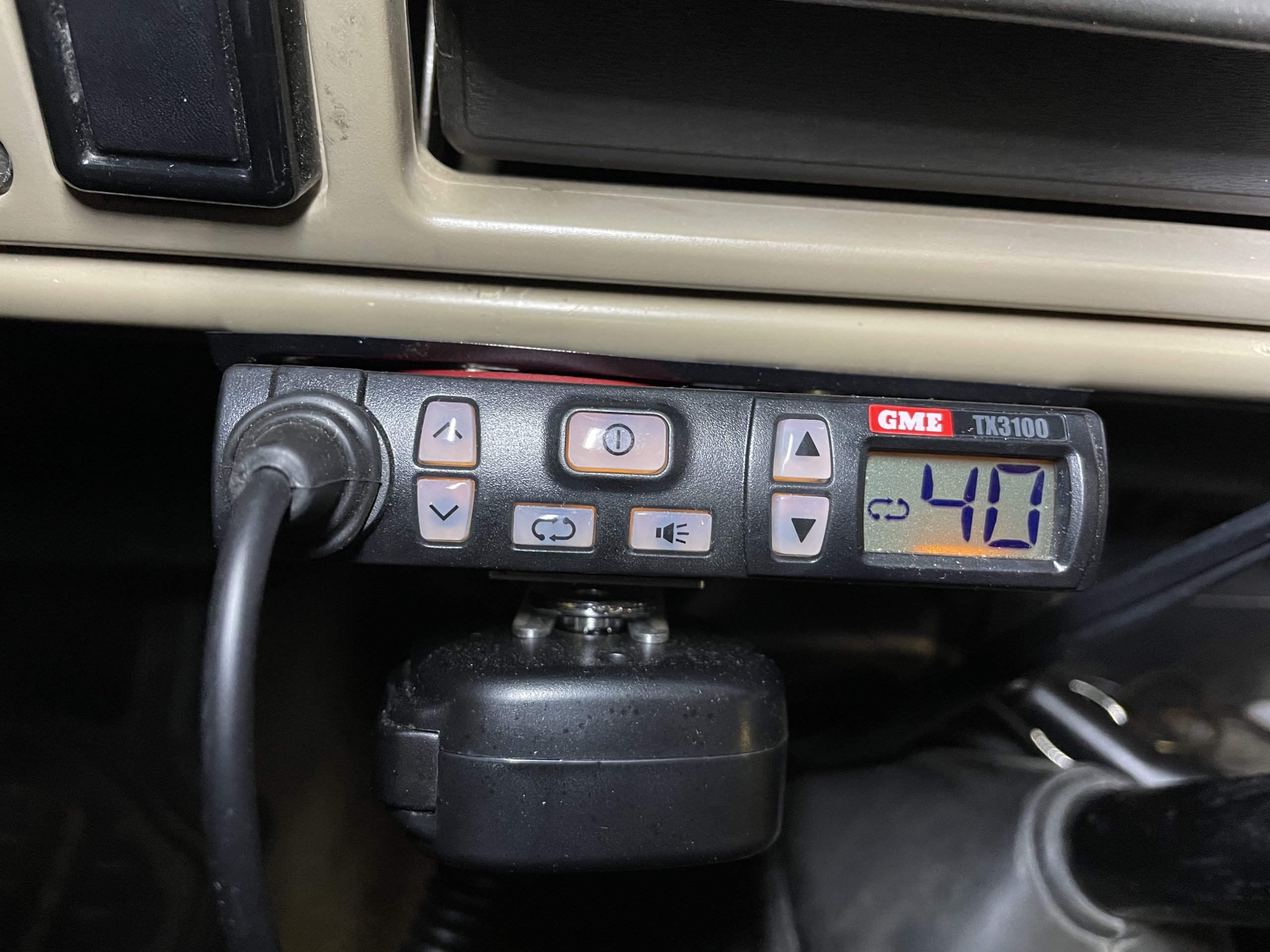
An all in one unit is very simple to install. In fact, anyone who is handy with a screwdriver could install one of these UHF radios with little effort. If the unit suffers a malfunction, they are easy to remove and replace. Some are quite small so they can be mounted almost anywhere. The problem with them is with deciding where to mount one and, in modern vehicles with sculpted dashboards and airbags everywhere, finding a suitable mounting position can be difficult.
The remote headset units allow for many more installation options. The main body can be installed within the dashboard or under a seat. The microphone with its display and controls needs only a clip that can be fastened in a convenient location on the lower dashboard or centre console. This could make DIY installations challenging so you may want to pay for a specialist installer to do it for you.
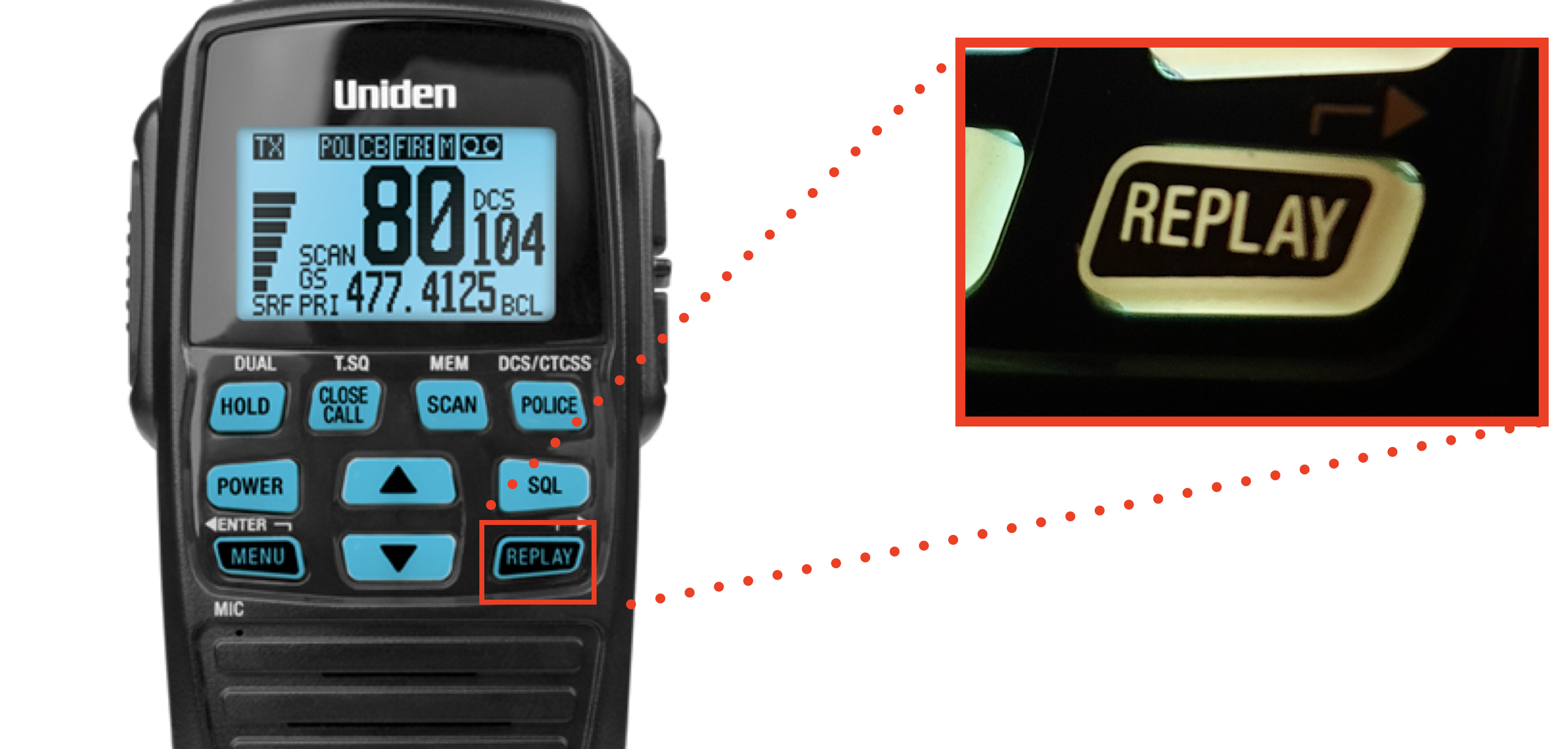
As mentioned earlier, the functionality of the various UHF radios on the market varies greatly. Almost all will have the ability to monitor two channels at once and be able to scan through all the channels. Both functions you will use quite often. Other functions such a selective calling and call tones you may never use. One feature I would insist upon is a replay function that allows you to replay the last transmission your radio received. This is extremely helpful if you receive a transmission but can’t understand what was said. You don’t have to go back to the caller and ask them to repeat their message. You just press the replay function to hear the transmission again. We have a Uniden 8080S UHF radio fitted to our Landcruiser and it has this function and after relying on it for the last 6 years, I would not purchase another UHF radio without it.
It is worth noting that even the best UHF radio will perform poorly if it is connected to a cheap antenna. A good quality antenna will improve the distance and clarity of your transmissions. It will also have the same effect on receiving transmissions.
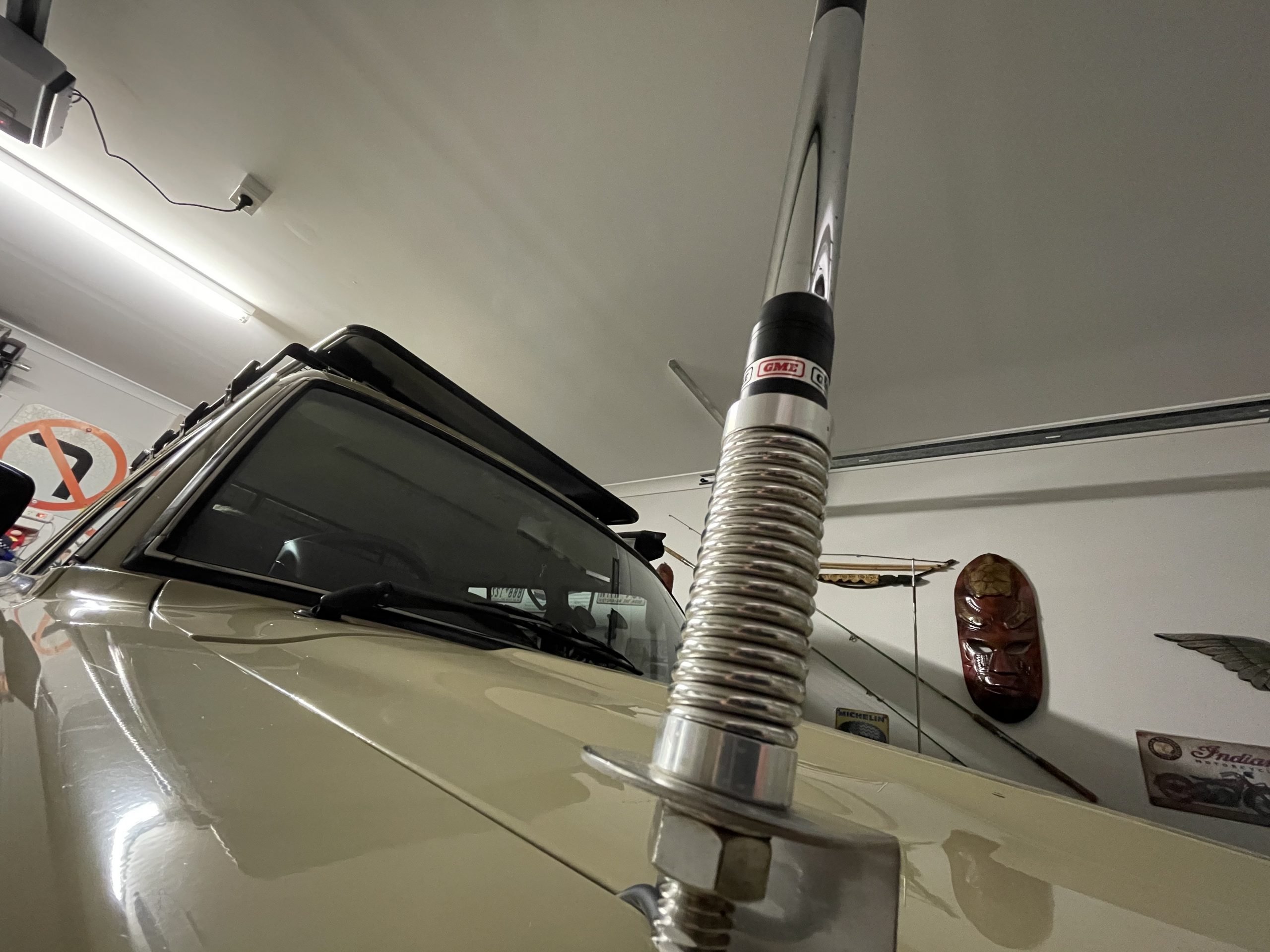
Antennas are generally rated in ‘dB gain’. It is a common misconception that the higher the antenna gain the greater the transmission distance. While this is true to some degree, a higher gain 9dB antenna will have a very narrow or directional transmission field making it ideal in open country but not so good in mountainous areas. A low gain 3dB antenna won’t transmit as far but it may perform much better in hilly terrain. You can purchase antennas that have two aerials on quick-fit connections, allowing you to swap between hilly and flat terrain. From our experience, most of the Australian continent is pretty flat. Mountainous terrain is more the exception than the rule. For this reason, we recommend fitting an antenna with around 6dB gain as this is a good compromise.
In addition to having an in-car UHF radio, we would also recommend purchasing at least one handheld UHF unit as well. These allow you to communicate with the driver of the tow vehicle when reversing into a caravan park or other tight space. No more flapping your arms around like a bird and giving confusing messages to the driver. Instead, you can talk directly to them without the need to shout. In fact, I would say using a handheld radio in these situations is a marriage saver.
Handheld UHF radios can also be used for communication between vehicles. If you find yourself touring with another couple who do not have a UHF radio in their car, you can lend them your handheld unit and communicate through your in-car UHF radio.
As is the case with the in-car UHF radios, the quality between various brands of handheld radios varies greatly. In fact, we strongly recommend you only purchase a brand name unit as the cheap radios have such poor quality audio output they are virtually useless. Stick to Uniden, GME, Icom or Oricom.
Handheld UHF radios vary greatly in size and functionality so you will need to set your priorities before you purchase anything.
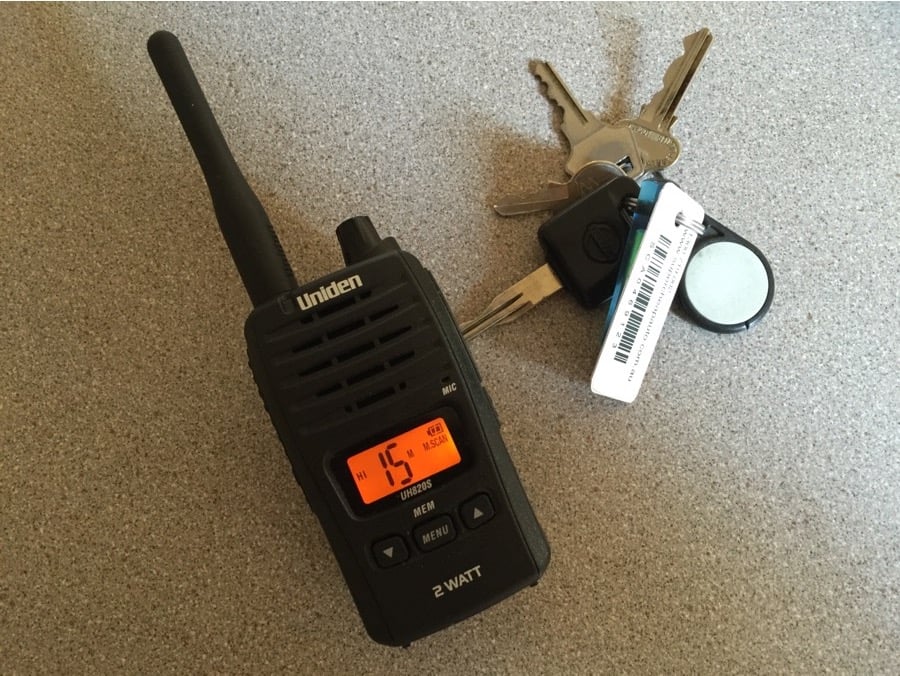
Power output is the first option to consider. Most are either 2-watt or 5-watt power output. Obviously the higher the output wattage, the further the transmission distance. Higher wattage also means faster battery drainage. Fortunately, most 5-watt units can be switched to a lower output setting to conserve the battery.
The size of handheld units also varies greatly. Obviously, the smaller the unit, the more convenient it is to store away, but a smaller size may also mean a smaller battery and limiting times between battery recharges.
Given a handheld radio will primarily be used outdoors, you should look for a unit that is durable and weatherproof. Some may be waterproof so if you drop the radio into a puddle of water, it should survive.
We have been using a Uniden 820s for around 5 years and it has been a fantastic unit. It has a number of features that have proven useful. It is a very small and portable unit yet it is very durable. It is only a 2-watt output but that has been sufficient for our requirements. The sound quality through the small speaker is outstanding. In addition to the standard 1600mAh long-life rechargeable battery pack, the 820s has the option of running on 3 x AAA batteries. By far its greatest feature is the ability to recharge the unit via a USB port which is awesome for extended off-grid camping.
Once you’ve got yourself set up with your UHF radios, you should familiarise yourself with the specific uses for the various channels available. We have already mentioned channel 40 as the truckie’s channel and channel 18 as a caravanner’s channel. Channel 5 and 35 are emergency channels and are not to be used except in an emergency. There are fairly hefty fines in place if you disrupt an emergency call on these channels. Channel 11 is the ‘call channel’ used to locate friends or other road users before quickly moving onto a different channel. For general chat, it’s safe to use channels 9, 12-17, 19-21 24-28, 30, 39, 49-60, 64-70, 79 and 80.
Safe travels.